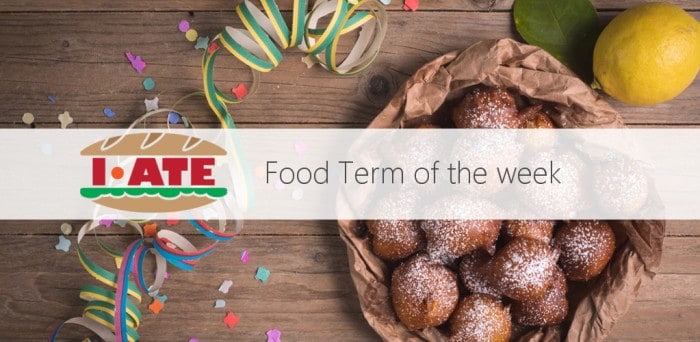Once the joy of Christmas has passed, most countries all over the world sink enthusiastically into the spirituality and fervour of Carnival. This traditional festivity that precedes Lent, fills our tables with the most exquisite delicacies. Now is your chance to enjoy a unique, gastronomic Carnival with one specially delicious protagonist: the sweets.

Between masks and costumes people take their time to prepare something delicious. Through this article you can discover which kind of sweet we have chosen for you today and what the sweetest term of the week is.
From Venice in Italy to Rio de Janeiro in Brazil all you have to do is mix eggs, flour, butter, sugar and a dash of imagination to obtain something delicious!
Castagnole is one of the most famous Carnival treats in Italy. The term derives from “castagna” (chestnut) because of the colour and size when cooked. They are in fact little balls fried and rolled in sugar and drizzled with the liquor alchermes, giving it that bright red colour. They can be stuffed with some cream or served empty. The picture below shows traditional Italian Castagnole.

In Northern Europe, specially in Sweden, Carnival addicts prepare Semla: this is a cardamom-spiced wheat bun which has its top cut off, and is then filled with a mix of milk and almond paste, topped with whipped cream, eaten during Shrove Tuesday.
Very similar to the Swedish variation are the Berliner Krapfen in Germany, normally filled with apricot or cherries jam and dusted with powdered sugar. They are also available filled with chocolate cream, eggnog custard, champagne custard, raspberry jam and rose hip jam. In the neighbouring Czech Republic people commonly eat Koblihy, jam or custard filled donuts, perfect for celebrating the end of Carnival and the beginning of Lent. The picture below shows traditional Berliner Krapfen.

If we move to the Netherlands we can find the Olienbollen, while in Belgium they are also called Smoutebollen: these are balls of fried sweetened dough stuffed with some fruits, especially apples and dusted with powdered sugar. The Flemish name Smoutebollen derives from the fact that these confections were traditionally fried in smout (lard). The picture below shows traditional Olienbollen.

Our friends in France are used to call this kind of sweets Croustillons or also Pets-de-nonne, a dessert pastry made from butter, milk, flour, sugar, eggs, and sometimes honey! Choux paste is cooked twice, to prepare the paste and to “transform it into puffs”. A cream filling can also be added. This recipe dates back to medieval times and is a crossing between a batter and a dough.
Papos de Anjo have their origin in Portugal, created by monks and nuns around the 14th or 15th centuries but nowadays they are typical of Brazilian cuisine and prepared to celebrate the Carnival of Rio. They are either small cakes or whipped, frothy treats made with egg yolks and sugar syrup.
Last but not least, celebrating Carnival with flowers is in the habits of the Spaniards. Do you think this is about our common flowers? Obviously not! I am referring to the Flores fritas de Carnaval, a delicious pastry in form of a flower with a sweet, crunchy texture.
You can take a look at other I·ATE Carnival proposals such as the one about chiacchiere and faworki and don’t forget to check our I·ATE food database.
What kind of sweets are usually prepared in your country for Carnival?
 Written by Laura Colaci
Written by Laura Colaci
Terminology study visitor at TermCoord. Currently enrolled at the second year of her MA in Specialised Translation at the Università degli studi di Napoli “L’Orientale”, she has been studying at the University of Luxembourg for her Erasmus programme. She speaks Italian as a mother tongue as well as English, French and German.
Sources:
- Ascolese, D. (2015) Dolci di Carnevale: Ricette dal mondo. Available at: http://bit.ly/2kSXe1n (Accessed: 15 February 2017).
- Caligiuri, G. (2014) Dolci di Carnevale nel mondo. Available at: http://bit.ly/2lPuhlg (Accessed: 15 February 2017).
- Pamos, P. (2017) Celebrando de forma dulce el Carnaval: Flores fritas, orejas, filloas, frixuelos y otras delicias. Available at: http://bit.ly/2lPuogE (Accessed: 15 February 2017).
- Ricette, O. – C. (2017) Papos de Anjo. Available at: http://bit.ly/2kq1GWt (Accessed: 15 February 2017).
- Sugartremens (2016) 9 postres típicos de Carnaval – Sugartremens magazine. Available at: http://bit.ly/2kSOJDq (Accessed: 15 February 2017).
